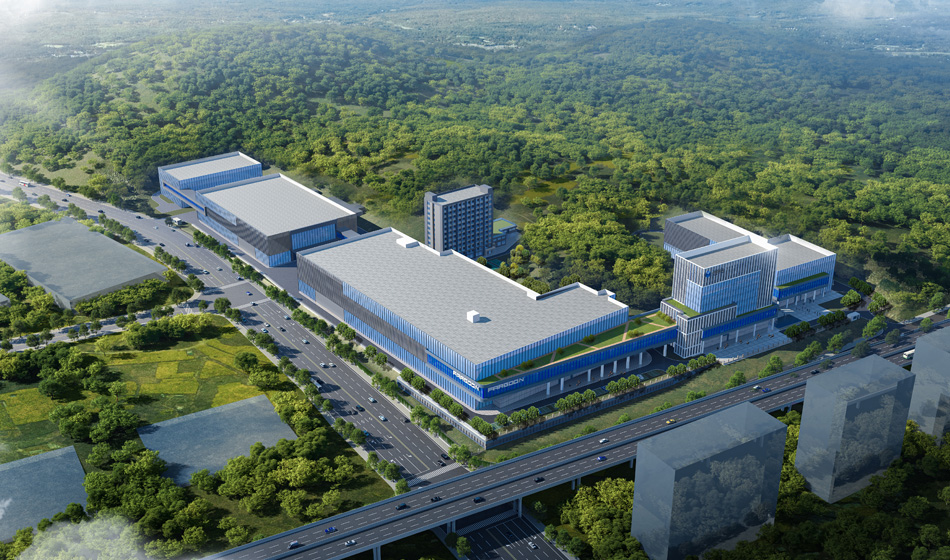Farsoon Technologies (SHA: 688433) made its highly anticipated debut on the Shanghai Stock Exchange (SSE) on April 17, 2023, after a successful initial public offering (IPO). As a result, the renowned Chinese manufacturer of industrial-grade 3D printers achieved significant financial success, raising CN¥ 1.1 billion ($155 million) with an issue price of CN¥ 26.66 ($3.77), leading to a market value of CN¥ 11 billion ($1.6 billion).
The funds will go towards the construction project of the Additive Manufacturing Technology Innovation (Shanghai) Research Institute, an R&D headquarters, and an industrial application center. It will also be used to enrich product lines and enhance Farsoon’s core competitiveness in AM.
After a month as a public company, Farsoon stock decreased 5% after its debut price of CN¥ 26.66 ($3.77) on April 17. By May 12, 2023, shares had fallen to CN¥ 24.25 ($3.42) before regaining strength and trading at an average of CN¥ 26.78 ($3.78) in the last weeks of May.
 Farsoon goes public on the Shanghai Exchange on April 17, 2023. Image courtesy of Farsoon Technologies.
Farsoon goes public on the Shanghai Exchange on April 17, 2023. Image courtesy of Farsoon Technologies.Exchange-listed 3D companies
Farsoon accomplished a significant milestone by becoming the first A-share listed company in Changsha, Hunan, this year, with its listing on the Science and Technology Innovation Board, also known as the STAR market. The STAR market is often regarded as Shanghai’s equivalent to the Nasdaq. Notably, Farsoon joined the ranks of pioneering 3D printing companies listed on the STAR market following the successful public listing of metal additive manufacturing technology provider Xi’an BLT Additive Technology (SHA: 688333) in 2019. Other notable players in the 3D printing industry listed on the Shanghai Stock Exchange include Sande Tribe Technology (SHA: 300022), a renowned 3D printing provider in China, and Junchen 3D (SHA: 300413), a high-tech enterprise focusing on 3D printing services and technology applications.
Additionally, several other 3D printing companies are publicly traded in China. For example, in 2014, printing solution provider Shining 3D (NEEQ: 830978) became publicly traded on the National Equities Exchange and Quotations (NEEQ), also known as the New Third Board. The NEEQ is a Chinese over-the-counter (OTC) market established in 2013 to facilitate capital raising for small and medium-sized enterprises.
Other notable 3D businesses trading on this market include 3D printing materials developer Shenzhen Guanghua Weiye (NEEQ: 836514); Guangdong Fenghua Zhuoli Technology (NEEQ: 834914), a pioneer in China’s industrialization of sand mold 3D printing technology; Hubei Jiayi 3D Hi-Tech (NEEQ: 834914), dedicated to the research and clinical application of 3D digital medical technology, and Shenzhen Aurora Technology (NEEQ: 871953), a company committed to building a 3D printing digital ecosystem.
Farsoon’s numbers
Based on the financial data of domestic 3D printing listed companies in 2021, the overall operating income surpassed 1.6 billion yuan. Among them, Shining 3D recorded the highest income, exceeding CN¥ 567 million ($80 million), followed by Xi’an BLT Additive with an income of CN¥ 5.52 billion ($781 million). However, it is worth noting that many 3D printing companies are still operating at a loss or reaching break-even. Both Xi’an BLT Additive and Shining 3D reported significant losses.
Regarding Farsoon’s financial performance, the revenue figures between 2019 and 2022 show a consistent increase. The revenue stood at CN¥ 155 million ($22 million) in 2019, CN¥ 217 million ($31 million) in 2020, CN¥ 334 million ($47 million) in 2021, and CN¥ 457 million ($64.6 million) in 2022. At the same time, the net income for Farsoon amounted to CN¥ 18 million ($2.5 million) in 2019, CN¥ 41 million ($5.8 million) in 2020, CN¥ 117 million ($16.5 million) in 2021, and CN¥ 99 million ($14 million) in 2022.
 Farsoon’s facilities in Changsha, Hunan. Image courtesy of Farsoon Technologies.
Farsoon’s facilities in Changsha, Hunan. Image courtesy of Farsoon Technologies.After more than a decade dedicated to advancing the 3D printing industry in China, Farsoon has solidified its position as a key player on the global stage, particularly in the realm of industrial-grade 3D printers. Leveraging its diverse portfolio of 3D printing technologies, such as selective laser sintering (SLS), fused deposition modeling (FDM), and stereolithography (SLA), Farsoon has established a strong presence across multiple sectors, including aerospace, automotive, medical, and consumer goods. Notably, the company is renowned for its open materials platform, empowering users to utilize various materials, ranging from metals and ceramics to plastics, in conjunction with their Farsoon 3D printers.
Farsoon has established numerous partnerships, leading to groundbreaking applications of its 3D printing technologies. A notable collaboration is with Airbus, where Farsoon’s plastic laser sintering technology was employed to produce lightweight cabin brackets for the A350 XWB aircraft. The brackets exhibited a remarkable 45% weight reduction compared to their traditional metal counterparts.
Other significant partnerships include Sartorius, with whom Farsoon collaborated to develop 3D printed bioreactors for cell culture, and Nanjing Prima Power Laser Technology, resulting in the production of a large-format metal laser sintering machine. In addition, companies such as Volkswagen have utilized Farsoon’s polymer laser sintering systems, like the HT1001P and HT403P, for manufacturing vehicle parts. Furthermore, Farsoon’s metal laser sintering systems, like the FS271M and FS421M, have been instrumental in creating intricate metal components for engines and transmissions.
With plans to continue developing new technologies and forming partnerships to advance the field of 3D printing further, Farsoon has reiterated its commitment to accelerating the evolution of manufacturing both locally and globally through the development and application of industrial 3D printing technologies. As Farsoon navigates the changing landscape of 2023 and beyond, its post-IPO trajectory will be intriguing.
Subscribe to Our Email Newsletter
Stay up-to-date on all the latest news from the 3D printing industry and receive information and offers from third party vendors.
You May Also Like
Printing Money Episode 14: Manufacturing Markets and 3D Printing Deals, with AMT’s Chris Chidzik & Dayton Horvath
For Printing Money’s first episode in 2024, Danny is joined by returning guest Dayton Horvath, Director of Emerging Technology at AMT, and by Dayton’s colleague, Chris Chidzik, Principal Economist at AMT. ...
CORE Offers to Buy 3D Printing Service Fathom Amid Economic Downturn
Fathom Digital Manufacturing Corp. (NYSE: FATH), a player in the on-demand digital manufacturing sector, received a non-binding acquisition proposal from CORE Industrial Partners, a Chicago-based private equity firm that played...
CORE Industrial Partners’ 3D Printing Buying Spree Continues with New Acquisition
CORE Industrial Partners completes its eleventh 3D printing firm acquisition in less than five years. Headquartered in Chicago, this private equity firm continues to focus on acquiring manufacturing, industrial technology,...
3D Printing News Briefs, December 15, 2022: 4D Printing, On-Demand Manufacturing, & More
We’re starting out with research in today’s 3D Printing News Briefs, as a Purdue University team is adding a fourth dimension to 3D printing. Then we move on to business,...































